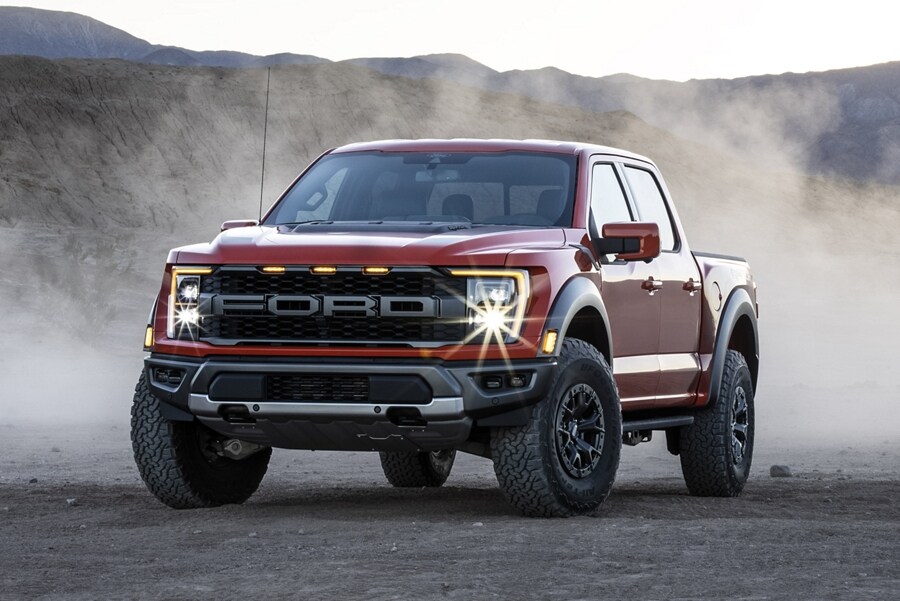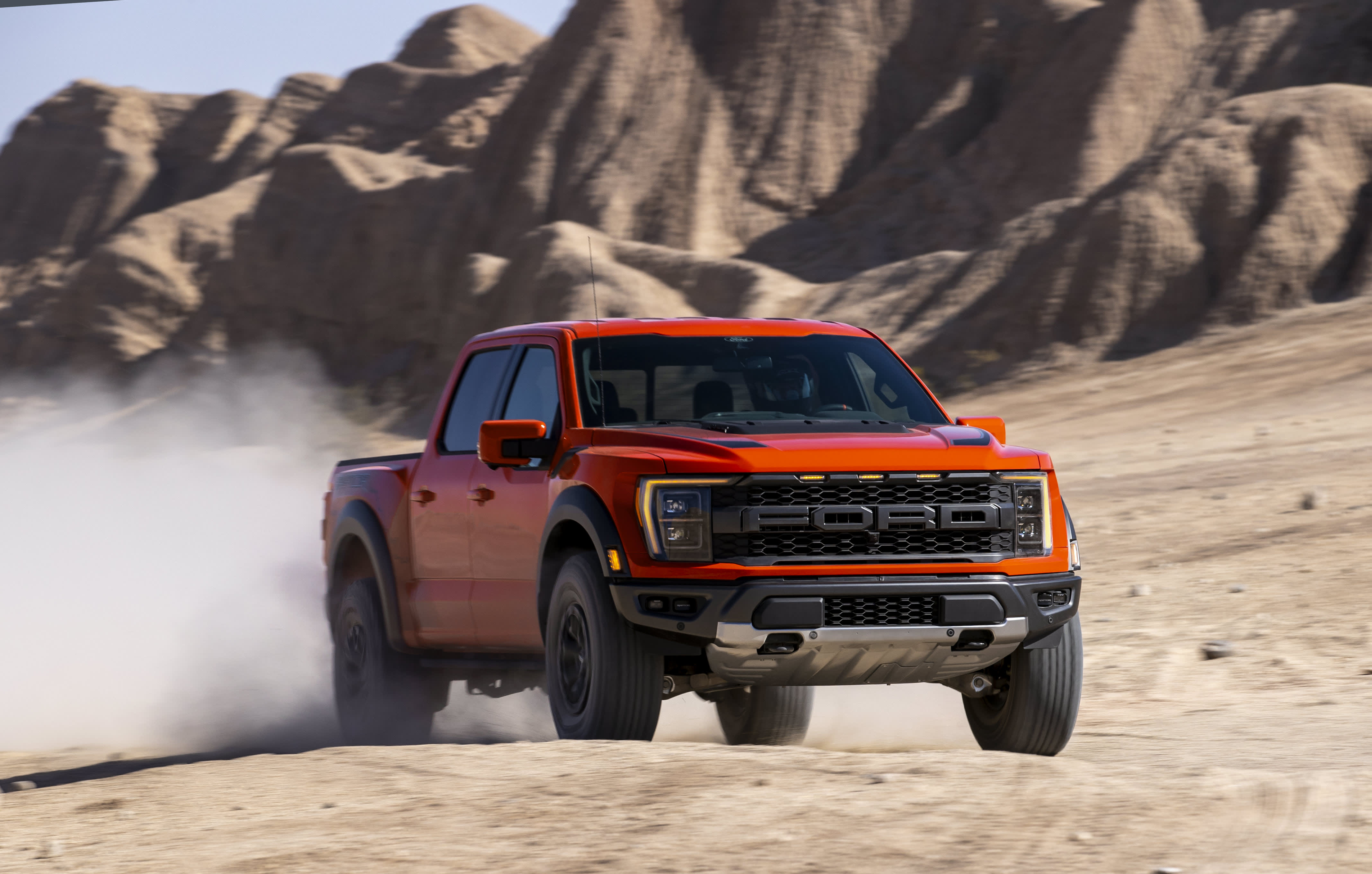While selling a reputed American nameplate, most automakers rely on the nostalgia factor associated with that car to rack in the sales. Legendary muscle cars like the Camaro, Mustang, and the Challenger are prime examples of these. They will forever be compared to the glorious yesteryears of their ancestors from the Golden Age of the 60s. The Lincoln Continental saw a similar fate. Having just returned to the automotive scene in 2017, the Lincoln Continental is under extreme pressure to live up to its legendary status as the most sought-for luxury car in NA.
However, Ford’s iconic F-series e.g., 2021 Ford F-150 pickup trucks are just built differently. The sheer reputation that these reliable trucks have built over the years is simply remarkable. No American automobile can match the F-Series’ heritage.
This popular pickup lineup has laid waste to every competitor when it comes to overall sales. As a matter of fact, F-150 pickups from the 1950s still roll on the streets of an American town to this date. The Ford F-Series is the pride of America, and we reflect upon its journey to immortality in this article.
History of the F-Series before the War
Before the onset of World War II, every pickup in the US shared their underpinnings with cars. Ford released a pickup in the dying years of the Model T to boost its sales. However, this pickup represented more of a roadster than an actual pickup, with a small bed on its rear end.
Gradually, the utility of these pickup trucks increased over the 1930s, but their car-based underpinnings prevented them from performing any serious work. At the end of World War II, Ford waved goodbye to its car-based pickups and completely changed the definition of its pickup trucks.
The humble beginnings of the first-gen Ford F-Series
America’s entry into World War put a full stop on all automobile productions. By the end of the war, Ford still had to rely on selling a slightly redesigned 1941 pickup. Chevrolet took advantage of Ford’s handicap and introduced its all-new Advance Design models. These pickups were capable of some serious workload.
Ford came up with its answer in the form of its first pickup lineup for 1948, also sporting a unique platform. From the half-ton F1 to the 3-ton F-8, these pickups redefined the game with their simple and utilitarian style. The Advance-Design trucks had an upper hand over the Ford pickups in the sales department. However, the GM pickups didn’t offer V-8 power under their hood, unlike their Ford rivals.
New gens down the road
The year 1951 saw a light refreshment for the F-Series with its sheet metal body. By 1953, the pickups included a Y-block under its hood rather than the old hot rodders. The nomenclature also saw a change, with the names such as F-1, F-2, etc converted to the F-100, F-250, and the F-350 that we know today.
The 3rd-gen F-Series implemented a squared-off, fully-integrated body-design that would define the F-Series for the rest of its lifespan. A 4×4 drivetrain was integrated into the F-Series in 1959, making it the first pickup to possess a factory-installed 4×4 setup.
The 4th gen F-Series- Boon or Bane?
The 4th-gen F-Series, introduced in 1961-63, brought forth a unibody construction as standard, with a unitized cab and a bed-mounted on the frame. However, this move proved detrimental as rumors spread around that overloading the bed could warp the doors shut. Ford ultimately had to separate the bed from the body frame in 1964.
The iconic Twin I-Beam front suspension came into being through a mid-cycle refresh in ‘65. This system would be the backbone of the F-Series until 1996. The F-Series went through another revolutionary redesign in ‘67. This redesign turned up the heat on its rivals with its modern style, more cozy cabin, and a bigger cab variant.
A new era for the F-Series?
40 years on, comfort features like air conditioning, power brakes, and AM/FM radios became a thing inside the F-Series pickups. The F-Series went through another generational change in 1973.
By the time the 6th-gen bid adieu, extensive use of rustproofing and galvanized steel became a new norm. These new pickups could handle even more punishment from the weather, rust, and other forms of environmental damage.
The legendary F-150 made its debut in 1975, replacing the F-100 pickup back then. Within a year, this pickup annihilated its GM rivals to emerge as America’s best-selling pickup truck. Things have never looked down for the F-150 ever since.
Within the onset of the 80s, Ford totally revamped the F-Series for the first time since 1965. The new pickups relished the reduced weight and a more efficient fuel economy. The new F-Series soon became a huge hit among the masses and racked in the most sales figures of any vehicle in America. The F-Series holds this title to this day since 1982.
More evolutions down the road
The F-Series stepped up its game in the interior sector as more generations came out, with equal emphasis on utility and practicality. The 8th and 9th gen F-Series waved goodbye in ‘87 and ‘92. Both generations made prominent use of sheet metal architecture and a comfortable cabin similar to a car.
The 10th gen F-Series scrapped the famous square shouldered-styling from the 80s and instead opted for a more car-like design. The directors over at Ford were skeptical of this change though because of the fiasco in 1961-63 and continued to sell the 9th-gen pickups in case things did go south. Ironically, the F-Series won the Motor Trend’s Truck of the Year for 1997.
The 10th-generation bridged the gap between the old-school pickups and the modern pickups. Ford brought in a new 5.4-liter supercharged V-8 for the new SVT Lightning trim, replacing the aging inline-6 and 4-speed manual powertrain.
A new high-end King Ranch trim was introduced and an additional door for extended-cab models was added for the first time in the pickup industry. Thus, Ford shaped the F-Series into more of a family cruiser rather than just a pure workhorse.
Modern times, new changes
The 11th-gen Ford F-Series faced a new batch of competitors from GM and Dodge RAM. Ford amped up its power and towing capabilities and also made the pickups taller and bigger than before.
As the levels of pollution and the number of road accidents skyrocketed, the US Government imposed strict safety and emissions laws for all pickups. Ford was the leader of its segment thanks to its class-leading capabilities and abidance by the laws.
For the 12th-generation, the F-Series grew even bigger. The flagship Platinum trim took the luxury factor to a different dimension. The 13th generation F-Series is where things start getting interesting. Ford became the first pickup manufacturer to introduce an aluminum-intensive body in 2015.
This gimmick paid dividends, as the F-Series gained a competitive edge over its rivals with its reduced weight- almost 700 pounds lighter! The fuel economy figures and towing capabilities also saw a huge boost.
Conclusion
This whole outline signifies the impact of the Ford F-Series over the pickup segment. With over 3 decades of market dominance, the F-Series surely knows what its audience craves. Ford’s iconic pickups like the Ranger, the SVT lighting, and the current pickup monster, the SVT Raptor may have stolen some of the limelight from the F-Series.
However, the legacy of Ford’s longest-standing pickup is etched into American history, making it the dream pickup for truck enthusiasts in the future as well.










